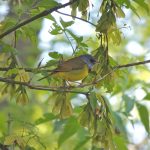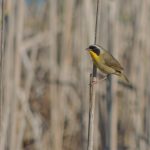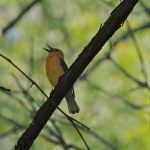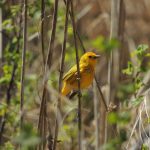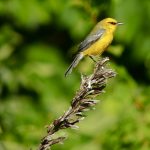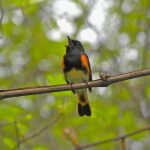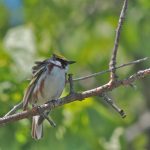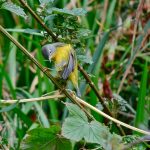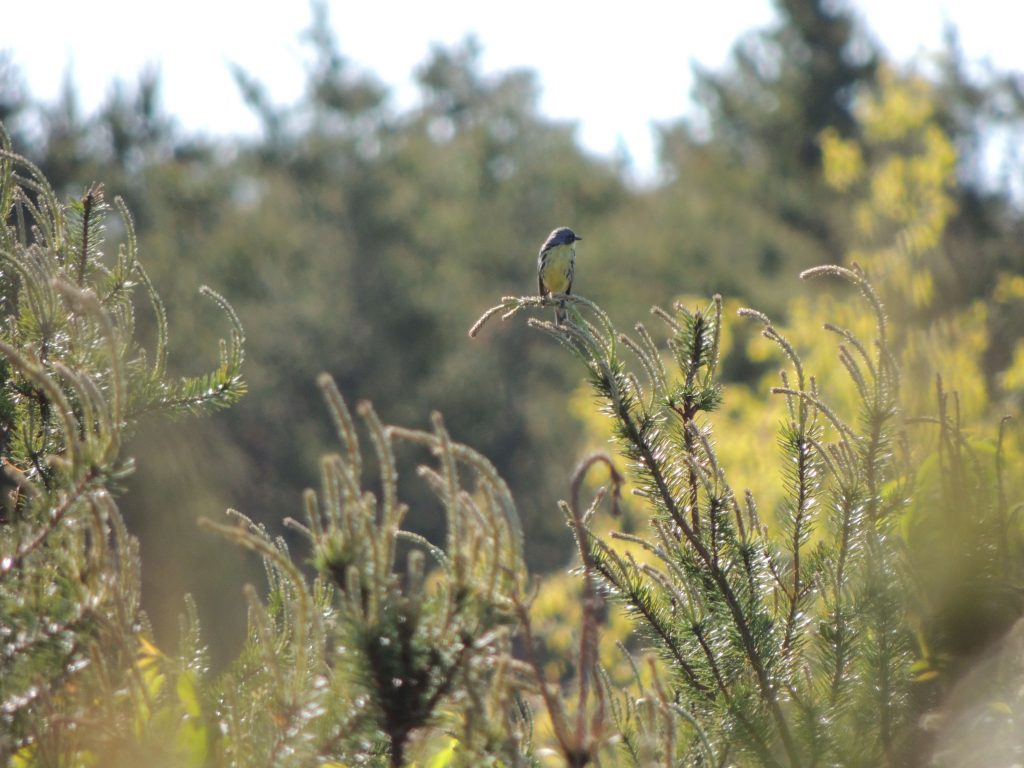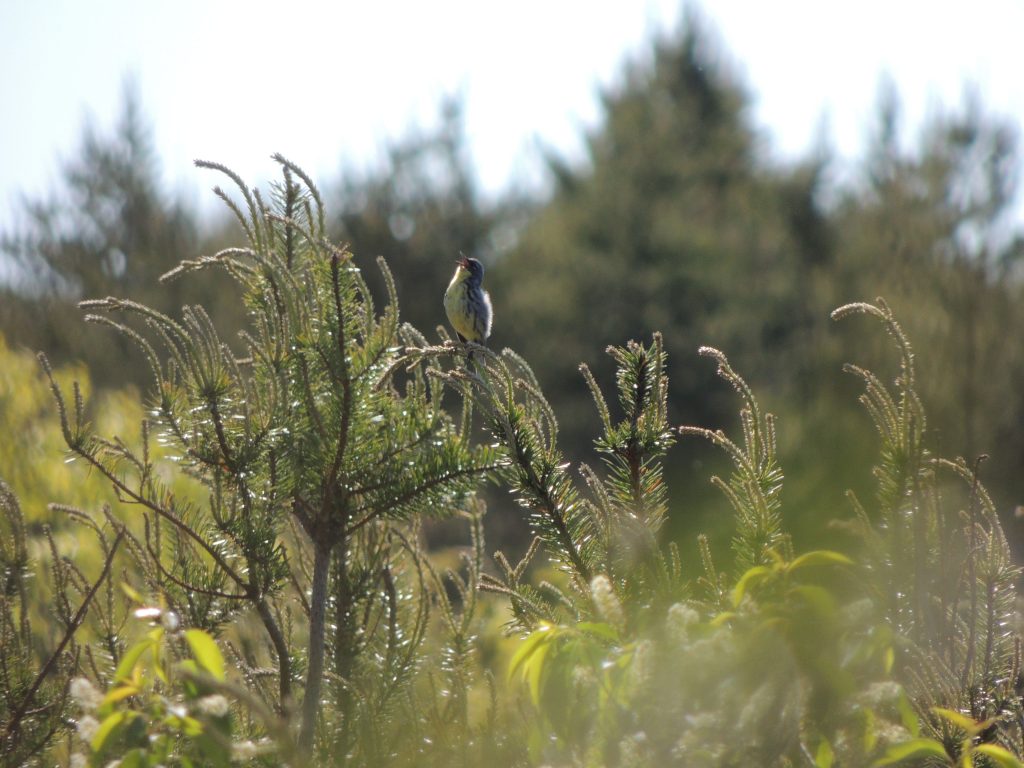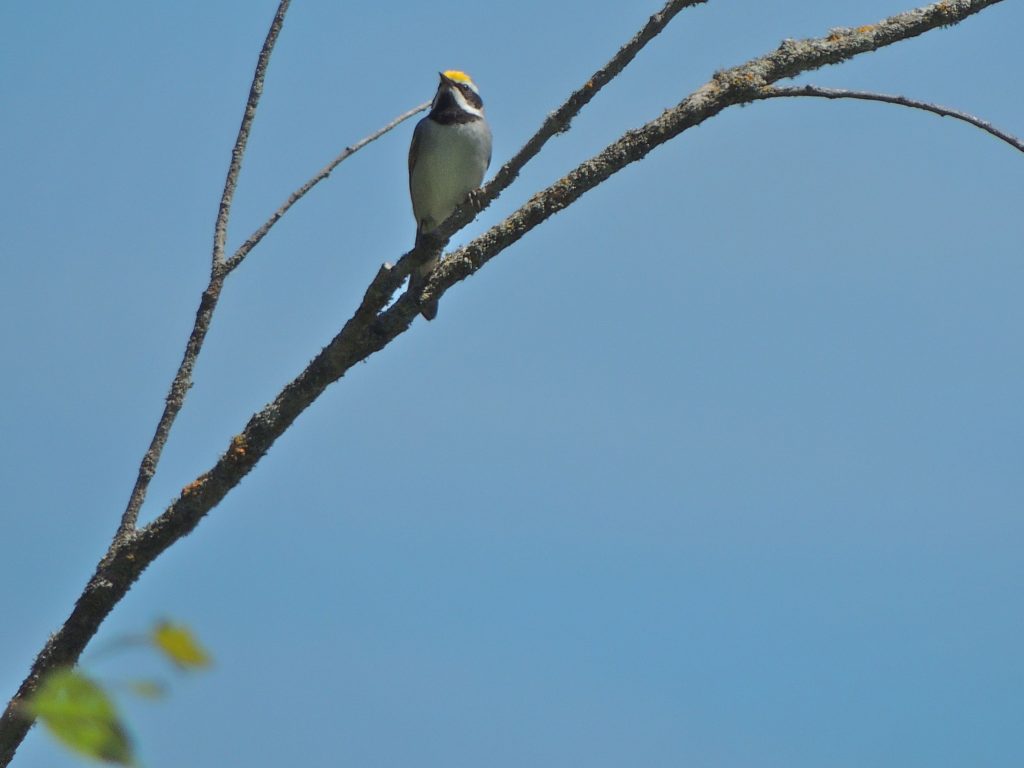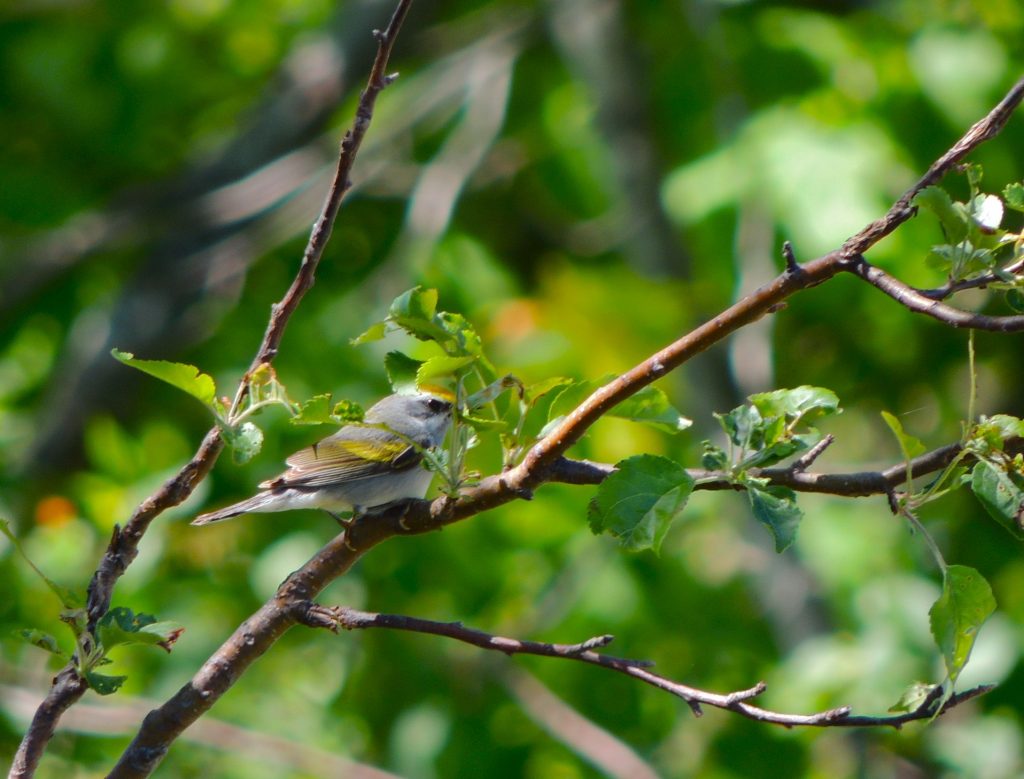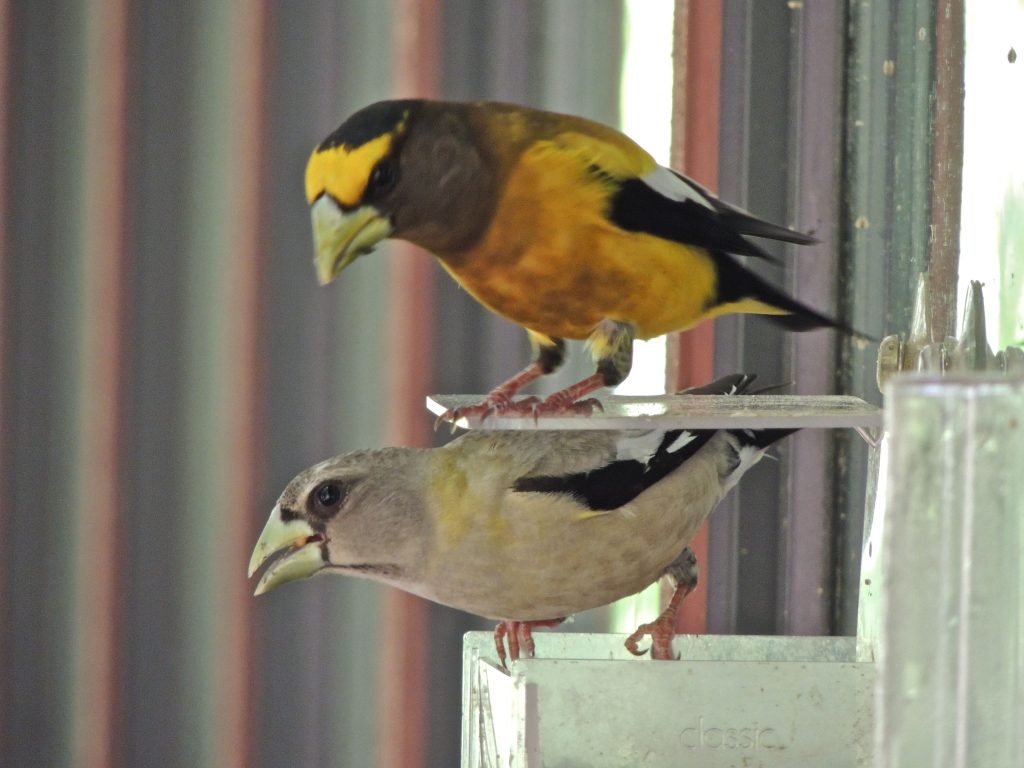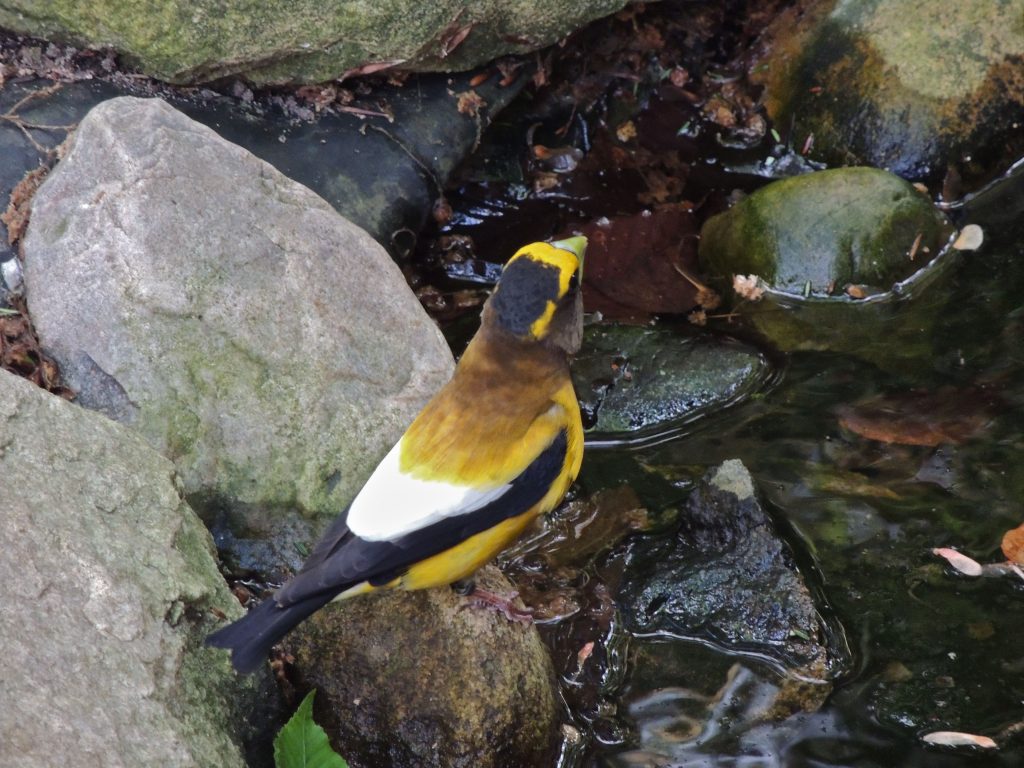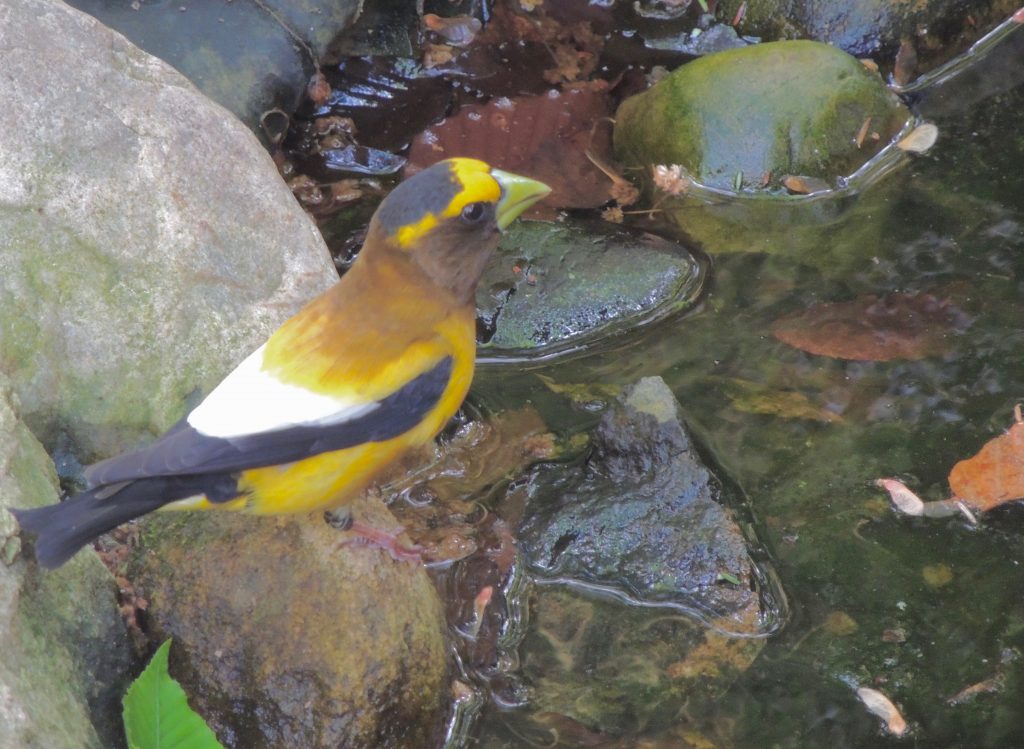Seeing our last bird of the trip, a Canada Warbler, I commented to Dan that our just-completed, six-day circuit had been book-ended by premium warblers: Mourning Warbler and Canada Warbler. It got me thinking. Could it be that we saw a special new warbler each day? I went back over my notes and no, we didn’t. It was birds of every stripe that made our journey so rewarding. But for the record and as an exercise in nostalgia here is a library of warblers.
Our starter was a Mourning Warbler found along a trail at the edge of a sphagnum bog not far from home. It was lifer for Dan and just as special for me. Although Mourning Warblers are around, they are not common and I rarely see one. At this site we also heard a Common Yellowthroat, always an engaging bird and the first of many more to come.
We spent our first overnight near Point Pelee and passed the afternoon in this legendary bird-magnet. There were suggestions of a Cerulean warbler but we couldn’t find it but a while later we were held spellbound by a couple of Prothonotary Warblers holding off intruders in their preferred dark, waterlogged, woodland home.
The second day we spent in richly agricultural southern Michigan visiting three sites: Sharonville State Game Area, Watkins Lake State Park and Nan Weston Nature Preserve. The morning was low on warblers but sensational on many other fronts. We added Yellow Warbler without difficulty and in the heat of the afternoon I heard a couple of Ovenbirds singing in the otherwise quiet, green forests at Nan Weston.
On day-three our goal was to explore Shiawassee National Wildlife Refuge, but first we prowled up and down Embury Road near Chelsea, a switchback of a road through quiet woodlands, we were seeking (and found) Cerulean Warblers. We also added three more new warblers that morning: Hooded Warbler (heard but not seen), Blue-winged Warbler and American Redstart. The afternoon at Shiawassee was for waterfowl but we also found more Common Yellowthroats, Prothonotary Warblers and Yellow Warblers along a woodland trail.
Nayanquing Wildlife Refuge on the shore of Lake Huron was another waterfowl spot and held no new warblers for us but, just to add colour, we topped up on Common Yellowthroats and Yellow Warblers. We made a side-trip along a nearby woodland edge, reported to be a spot to find Golden-winged Warblers; we didn’t but instead found a Blue-winged Warbler, our first Chestnut-sided Warbler and a brief and shadowy Mourning Warbler.
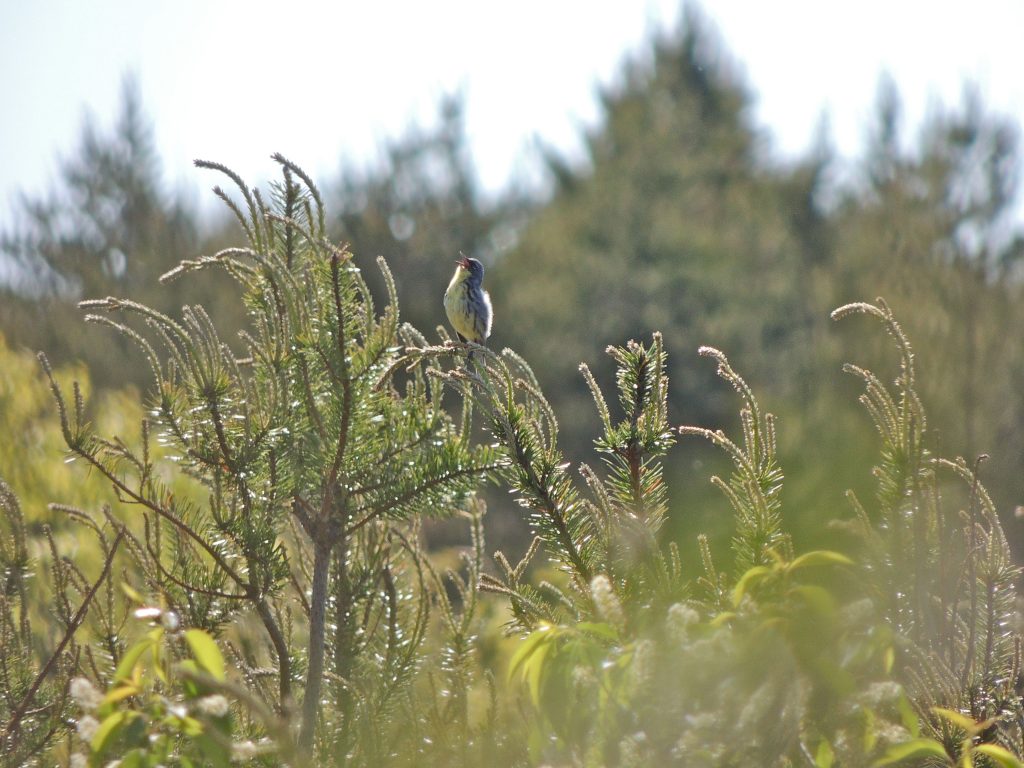
The next day was to be the culmination of our trip. We headed to Hartwick Pines State Park in countryside more reminiscent of northern Ontario where Kirtland’s Warbler was an easy find. It’s a pilgrimage bird for many and I was in the company of a score of checklisters. It was the Kirtland’s we were after but brief appearances by a Palm Warbler and a singing Nashville Warbler were welcome sightings nevertheless.
That afternoon we tracked down a pair of beautiful Golden-winged Warblers Keeping company with Chestnut-sided Warblers and American Redstarts. At our otherwise unremarkable motel, afternoon Pine Warblers sang from the White Pines around us.
On Dan’s last 24 hours in Ontario and before delivering him at the airport I was able to show him three each of Northern Waterthrush and book-ending the week, a couple of splendid, singing Canada Warblers.
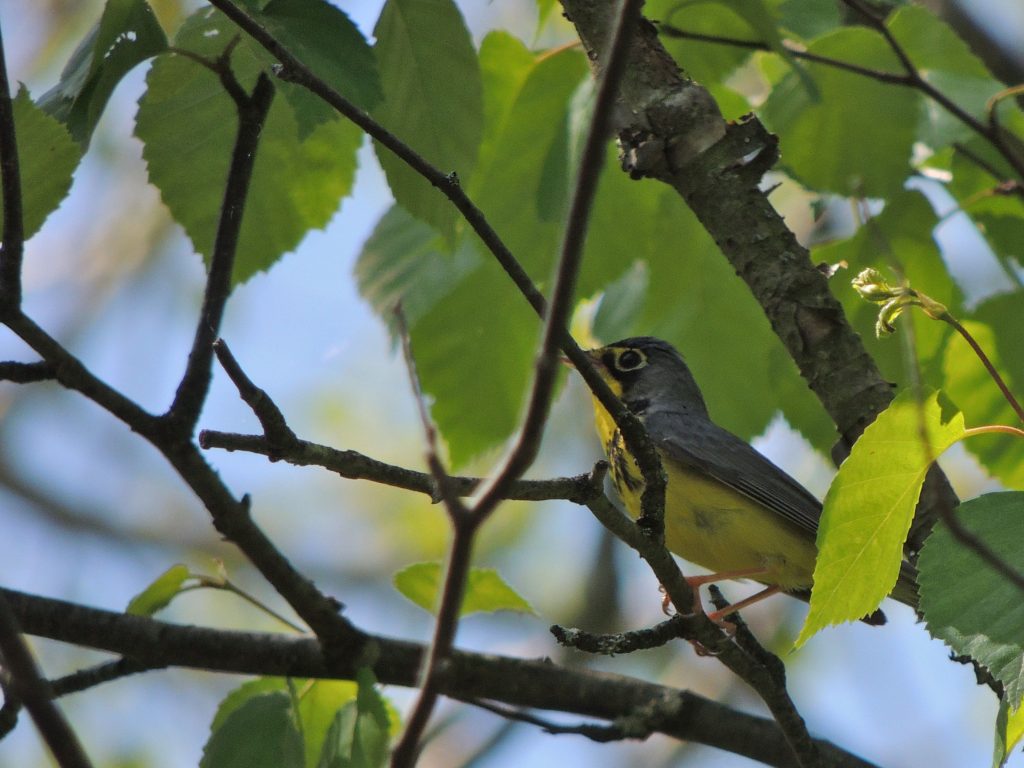
I make that seventeen warbler species; perhaps we should have found Black and White, Yellow-rumped and Magnolia Warblers had we scoured appropriate habitat. Dan clung to a really long-shot hope, a Connecticut Warbler, but no. Yellow Warblers, American Redstarts and Common Yellowthroats were the warbler lubricant that kept things moving along, they were part of the background pretty much every day and at almost every place.
